Whizz across the city
Here’s a board game to enjoy in this last week of vacation.
Here’s a board game to enjoy in this last week of vacation.
Time for some mental Maths tricks. Go on and solve them all!
This weekend enjoy this simple fun Maths game.
Take a trip to space with these books and movies.
Here’s a holiday destination that is vastly unexplored — space! Take a trip to the great unknown with these books and movies.
Friendship, loyalty, adventure, and more… these books and movies, featuring animals, are just what you need this summer.
Bored, this summer? Well, here ar a few fun books and movies you can check out, and keep yourself entertained.
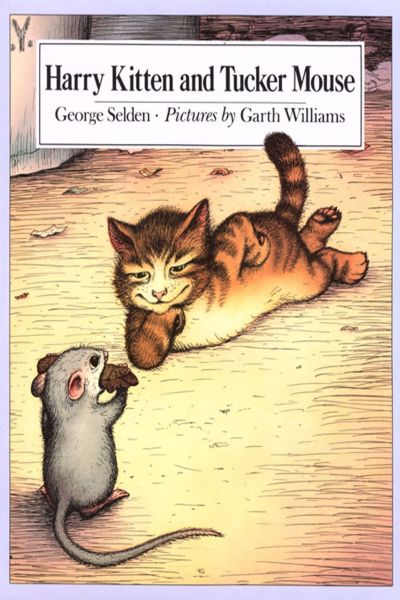
Harry Kitten and Tucker Mouse by George Selden
Ever dreamt of a cat and mouse being friends? Well, Tucker and Harry are. Tucker, a little mouse, was born in a box of Kleenexes, and eventually ran away from home to avoid being captured by sanitation workers. He decides to take his name Tucker, from a bakery on Tenth Avenue, ‘Merry Tucker’s Home-Baked Goods’. He meets Harry Kitten, who took his name from one of the two children he heard talking. The duo befriend each other and scour New York City in search of a home. Their wanderings take them to the basement of the Empire State Building and to other places. However, when they run into trouble, how will they fare? Where will they turn to next?

Child of the Wolves by Elizabeth Hall
Granite, a Siberian husky puppy, is all alone in the Alaskan forest after escaping from his kennel. Each moment of his life is threatened as he wanders alone, hungry, and injured. Finally, he meets Ebony, a black wolf, and Snowdrift, a white wolf, whose pups were kidnapped. She welcomes him into the wolf pack and raises Granite as a foster son. But the other wolves are not welcoming and Granite faces multiple attacks — from the pack and wolf hunters. Will he be able to earn his place in the pack and finally feel at home?
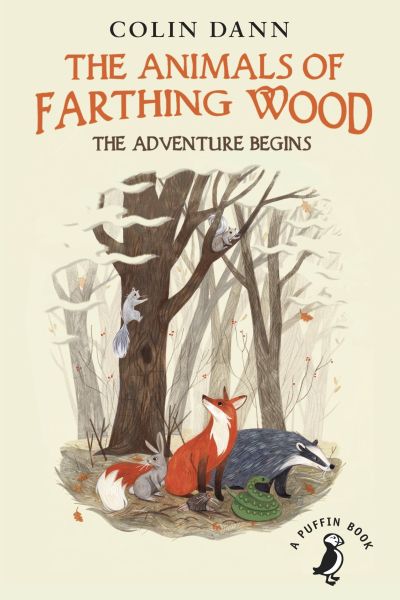
The Animals of Fathing Wood by Colin Dann
Farthing Wood is in trouble. On the one hand is the drought; on the other is development. The wood is overrun by bulldozers and the animals no longer have water to drink or a place to live. Driven to the edge, the animals led by Mole, Tawny Owl, Fox, Badger and Toad decide to move to the White Deer Park, a nature reserve that is quite far away. En route they have to face a hunt, a storm, a fire and many more adventures. Will their friendships stand the test? Will they be able to overcome the odds and live in peace in the reserve?
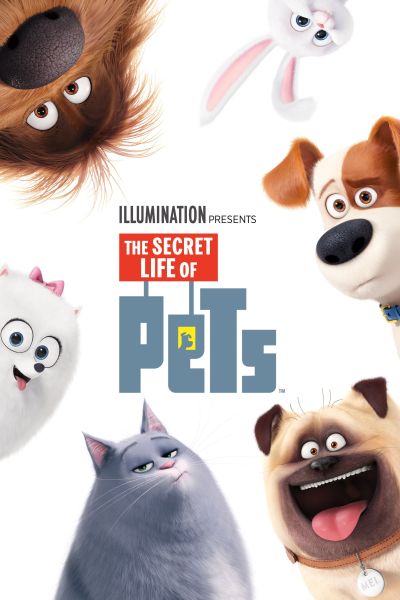 The Secret Life of Pets (2016)
The Secret Life of Pets (2016)
Max is a spoiled dog who enjoys a comfortable life in a New York building. However, his world comes crashing down when his owner adopts another dog called Duke. During their walk, Duke attempts to abandon Max in the alley, but things begin to go awry when they encounter a group of ferocious alley cats and wind up in a truck bound for the pound. Fortunately, they are rescued by a rebellious bunny, Snowball, the leader of “Flushed Pets,” a group of drain-dwelling animals who despise humans because they were mistreated and rejected by their owners. While Max and Duke pretend to fit in, what happens when their cover is blown and Snowball learns that the duo is domesticated?
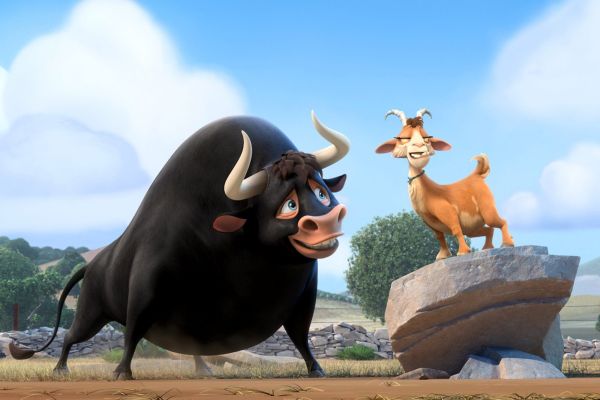
Ferdinand (2017)
Ferdinand is a young bull with a

Rio (2011)
Blu, a macaw, never learned to fly because he had been captured by smugglers as a hatchling. He lives happily in Minnesota with his Linda, his human friend. Blu is considered to be the last known living male of his species. So ornithologist Túlio Monteiro invites Blu and Linda to Rio de Janeiro so that Blu can mate with the last known female, Jewel. But Jewel is fiercely independent and longs to flee to the wilderness. When they try to escape, the two are captured by Fernando, an orphan, and Nigel, a cockatoo. Fernando and Nigel are employed by a smuggler Marcel, who wants to sell Blu and Jewel in the black market. Will Blu and Jewel escape the smugglers and win their freedom?
Hang on, that’s not all. Here’s a fun game for you to try out. It’s the picture version of a Sudoku: A picdoku. Try your hand at this game before kickstarting your reading or movie marathon!
A day dedicated to laughter? Read on to know more…
Did you know that there is a day dedicated to laughter? That’s right, it’s called World Laughter Day, and it’s celebrated every year on the first Sunday of May. This year, World Laughter Day was on May 7.
World Laughter Day was started by Dr. Madan Kataria in 1998. Dr. Kataria is a doctor from India who believes that laughter is the best medicine. He started a movement called Laughter Yoga, which is a form of exercise that uses laughter to improve health and well-being.
There are many benefits to laughter. It can help to reduce stress, improve your mood, and boost your immune system. Laughter can also help to strengthen your relationships and make you more creative.
So don’t forget to laugh! Laughter is good for you, and it’s a lot of fun. Here are a few ideas for how you can celebrate World Laughter Day:
Watch a funny movie or TV show.
Read a funny book.
Go to a comedy show.
Just laugh out loud!
And finally, tell jokes with your friends and family.
To help you with the last one, here are 10 fun jokes that’ll make you laugh, think and share!
Want some chills crawling down your spine? Then check out this list of books and movies.
What happens when you hear something go bump? You get scared right? Then what? If you are the adventurous sort, you will go to investigate. But if you are the type that gets frightened, you might just curl up in bed and wait…
Here are some books and movies with kids who got scared…okay may be just a little bit.
The Haunting of Aveline Jones
Phil Hickes
Aveline’s greatest love is reading ghost stories. At half term, she is sent to stay with her Aunt Lillian in a small, creepy town called Malmouth. Resigned to a dull, boring holiday, imagine her joy when one day she discovers a spooky old book. The stories are spine-tingling. Then she discovers that the book belonged to a girl called Primrose Penberthy who vanished mysteriously and was never seen again. Aveline’s curiosity is piqued and she wants to know more about Primrose. She enlists the help of her new friend Harold. However, now something or someone is after Aveline.
The Puffin Book of Spooky Ghost Stories
Introduction by Jerry Pinto
Thirteen may be unlucky for some but, for readers of ghost stories, it is a godsend. Thirteen stories of hauntings, dreadful happenings and creatures that go bump at night. If you thought deserted bungalows were haunted, then you are right. Then there is the reincarnation of the goddess who only wants sacrifices of blood. Is your school haunted? Well, here is a story of one that will make you wish you studied there, or not. All the best writers of spooky stories are from Paro Anand and Subhadra Sen Gupta to Jerry Pinto and Ranjit Lal.
The Canterville Ghost
Oscar Wilde
An all-time favourite, The Canterville Ghost never get boring. Set in the late 19th century, the story is about an American family that moves into Lord Canterville’s old home. They do not believe in ghosts and hence pooh-pooh all the stories they hear about the Canterville ghost. They move into the house and the ghost swings into action. There are bloodstains on the carpet that will never go away, and the sounds of clanking chains echo through the house at night. But, the family is not bothered. The ghost is now offended. What is he going to do?
The Haunted Horse: Kipling’s Greatest Ghost Stories
Rudyard Kipling
The man who gave us Kim also gave us some classic horror stories. Set in the time of the Raj, it is a time traveller’s delight. If you are not a cat person, then the story about the Sahib who finds ghostly cats everywhere even around his bed will surely spook you out. What about the gentle horse that causes accidents wherever she goes and the ghostly hoof beats that accompany her? There are 16 stories in this book and you have everything you ever need to scare you: ghostly children, haunted ships, treacherous amulets and phantom rickshaws. It’s sure to keep you up at night.
Scoob
A young, lonely Shaggy Rogers meets and adopts a talking Great Dane. He names the dog Scooby-Doo. On Halloween night, Scooby and Shaggy meet three other children – Fred Jones, Daphne Blake and Velma Dinkley. In a haunted house, they apprehend a thief disguised as a ghost. They form Mysteries Inc. and they hope to solve more mysteries. After 10 years and they decide to go into business, but the investor is not impressed with Scooby and Shaggy. The duo quit the group. In Takamoto bowling alley, they are terrorised and captured by shape-shifting robots. Will their friends come to rescue them?
Goosebumps
When Zach’s father passes away, he and his mother, Gale, shift to a small town in Madison, Delaware. He becomes friends with his neighbour Hannah. Gale gets a job at the local high school. Zach meets Champ, a friendly student though a bit cowardly. When Hannah invites Zach to an abandoned amusement park, Hannah’s father warns Zach to stay away from Hannah or bad things would happen to him. Zach is convinced that Hannah is in danger. One night, he and Champ enter Hannah’s house. They find a bookshelf with numerous locked manuscripts from the Goosebumps franchise. Thus begins their adventure.
Frankenweenie
Victor Frankenstein is a young scientist and amateur filmmaker. He lives in New Holland, a quiet town. His greatest love is his dog Sparky. His father, concerned about his isolation, encourages him to take up baseball. In his first game, Victor hits a home run. But Sparky chases the ball and is hit by a car and killed. Victor is inconsolable. At school, the new science teacher demonstrates the effect of electricity on dead frogs. Victor decides to reanimate his old friend with a bolt of lightning. Though he succeeds with his experiment, things are never right again.
Twelve-year-old DJ Walters documents the strange behaviour of Horace Nebbercracker who lives in the house across the street. On the day he sees Nebbercracker take away a little girl’s cycle and scaring her away, his parents leave town. He is in the care of a teenage babysitter named Zee. When DJ’s friend Chowder loses his basketball in Nebbercracker’s garden and tries to get it back, Nebbercracker stops him. But things go awry when Nebbercracker suffers a heart attack and has to be taken to hospital. Another friend, Bones, appears and tells them stories he has heard about Nebbercracker. But it is not Nebbercracker that is strange, the house is also.
Cheese, soup, hamburgers, pies… These books and movies are all themed around yummy food.
This summer, take a gastronomic adventure by indulging in these books and movies that feature delicious food. They will surely leave you hungry for more.
First, can you match these book titles with the food item around which they are themed?

From the prolific creator of the bestselling series The No. 1 Ladies’ Detective Agency and many other popular novels, comes this book for children. So, what makes the perfect hamburger? How do you make sure it’s just the right amount of yummy, juicy, and droolworthy? Well, the main character in this book, Joe, has just created the most delicious hamburger ever. But when his friend, Mr. Borthwick, wants to use the recipe to sell it in his hamburger shop, Joe realises that he has forgotten how to make it. Will he persevere and complete his task of recreating the recipe, or give up?

Don’t you love it when your mother or father cook in the kitchen and delicious aromas waft in from there? Your mouth waters and your tummy rumbles a little extra. But what happens when they discover that they’ve run out of spices? That’s exactly what happens to Annie and her grandfather (Appoopan). They head to the famous spice market in Mattancherry, where Annie discovers the fascinating world of Indian spices, from cinnamon to turmeric, pepper to star anise, and much more. As Annie goes on a whole new flavoursome journey, so will young readers like you.

After growing up homeless, 12-year-old Cady Bennett discovers a new kind of life when she is sent to live with her aunt she didn’t even know she had, in a quaint mountain town. Cady stays in her mother’s old room and gradually gets acquainted with life in the countryside. Her aunt runs a pie shop which is failing. She ropes in Cady to help her bake a 1,000 pies for a pie festival, and Cady wants to do everything she can by using everything she’s learnt, in order to help protect the first place she has ever felt safe. This uplifting story is all about family, friendships, and lots and lots of pies.

Twelve-year-old Rosie has just had a fight with her best friend Bailey, and this makes her quite angry. She finds comfort in her Granny Torrelli’s warm and inviting kitchen, where there are not only delicious tastes and aromas but also plenty of conversations. As she and her grandmother whip up dish after dish, they share stories and memories from each other’s lives. When Bailey and Rosie come together to cook with Granny Torrelli, she helps them realise that friendship is what really matters in life. Filled with wisdom, Granny Torrelli’s tales remind readers about how conflicts between friends and family eventually pass and “Tutto va bene” — all is well.
Now, moving on to movies. Can you match these four titles with the photo that represents them? Take a shot at it.

What does it take for an acclaimed chef to rekindle his passion for cooking? For Carl Casper, it is losing his job at a popular restaurant after a public argument with a food critic. With a ruined career and a strained family set-up, Carl begins from scratch. He starts a food truck business, and in the process rediscovers his passion for Cuban food. As he joins forces with his family to run his new venture, Carl reignites not only his zeal for cooking but also his zest for life and love. We learn that, if you truly find your passion, it’s never too late to turn your life around.

This feel-good movie tells the quintessential cooking story. We move back and forth between the present and past, from the early years in the career of chef Julia Child and the life of blogger Julie Powell. Things get exciting when Julie decides to cook all 524 recipes in Julia’s cookbook in 365 days. While both their lives are set in completely different times, both women are driven by a passion for food. The movie fills us with inspiration. It teaches us to always be willing to try new things and to never give up on anything we are truly passionate about.
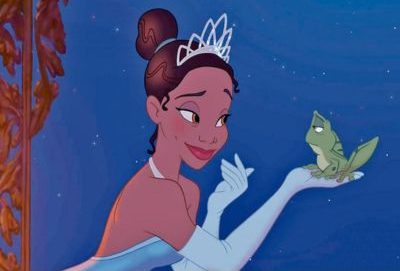
Tiana, who lives in New Orleans, has only one dream in life — to start a restaurant of her own. To achieve her goal, she works as a waitress day and night. The Prince of Maldonia arrives in the city, and several twists and turns later, he is unexpectedly turned into a frog. Pretty soon, so is Tiana. While the main narrative focusses on whether they will turn back into human beings, this movie has plenty of food-centric moments. From Tiana’s delectable gumbo to her famous beignets, hearty food is a prominent theme, and our tummies can’t help but rumble while watching the movie.
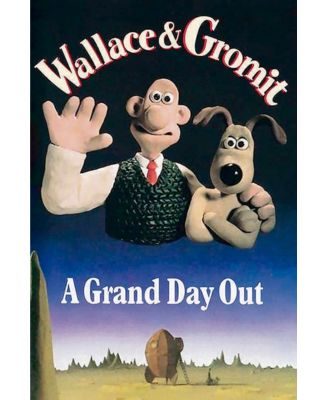
What do you do when you run out of a food item you really like? Go shopping with your parents and buy it? When inventor Wallace discovers that he is out of cheese, which he loves, he goes not to a store but to the Moon, as “everybody knows the Moon is made of cheese”. He sets off for a picnic on the Moon and takes his dog Gromit along in a home-made rocket. What happens on the Moon? Do they get to replenish their favourite snack? This short film tells you the rest of the story.
Photos: Special arrangement
English idioms are really quirky. These sports-related phrases are no exception.
If you follow sports closely, you’ll notice that every sport has a set of phrases or terms used to describe certain situations or actions. Over the years, some of these phrases started being used to describe situations outside the sporting arena as well.
For instance, when someone ‘calls the shots’, it means they are in charge. This comes from billiards. When ‘the ball is in your court’, it means it is your decision or your responsibility to do something. This originated from tennis.Below are some other phrases/idioms. Can you guess the sport from which they originated?

1. When you are on a sticky wicket, it means that you are in a tricky or awkward situation. In the sporting context, this phrase is used to describe a pitch that has been drying after rain and is difficult to play on.

2. When something goes down to the wire, it means that its outcome is not decided till the very last moment. This phrase comes from a sport where there was a practice of stretching a wire across the finish line.

3. When you have someone in your corner, it means that they are supporting you and helping you. This idiom comes from a sport where the athlete’s trainer and assistant are usually in his/her corner to give them advice between rounds.

4. This phrase means that no rules or restrictions will be applied in a situation or conflict. It originated from a sport in which various ‘holds’ are used to pin one’s opponent. Eventually some holds were decided to be too dangerous and therefore banned from the sport. But a competition in which even the banned holds were allowed to be used was usually advertised as ‘no holds barred’.

5. When someone tells you that you have hit it out of the park, it means that you have done something outstandingly well. The origin of this idiom is from a sport where the player literally hits the ball so hard that it lands outside the area of play (similar to a six in cricket).
Building a sand castle, collecting shells and pebbles, paddling in the water… all this and more is part of being at the beach. And here are some books and movies that bring those memories back.
A holiday by the sea is enjoyable and relaxing. But beyond that is the adventure that sea brings to life. As the waves beat upon the shore you are filled with an excitement that you can never feel elsewhere.
We bring you four movies and four books, to help you relive that happy time by the sea.
Count the number of each object in the picture. Have you got them all?
This week we bring you a simple game. How many of each object can you see? Write down what you see.
